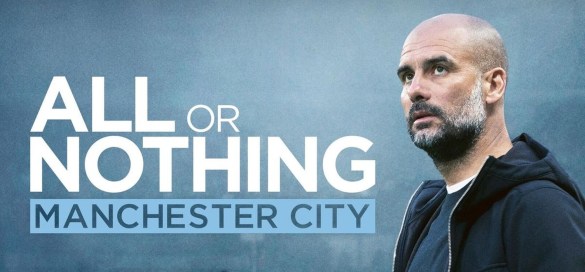Three-Point Lighting
Here are three video tutorials about Three-Point Lighting. Enjoy!
Here are three video tutorials about Three-Point Lighting. Enjoy!
 All Or Nothing
All Or NothingAmazon Prime has firmly established itself as the creators of powerful and revealing documentaries about life behind the scenes at some of the most high-profile sporting brands in the world. First the NFL teams Dallas Cowboys, Los Angeles Rams and Arizona Cardinals, then the New Zealand All Blacks, and then Manchester City, of course. Each docuseries has become must-see television and demonstrates the benefit of genuine access to your subject.
This post is about the making of another all-time classic sports documentary: Senna; the compelling story of Ayrton Senna, the most charismatic of all motor-racing drivers. Filmmaker Asif Kapadia creates the narrative of this film entirely from archive material; and as a result of this documentary-making process, Senna effectively tells the story of his Formula 1 career in his own words. It’s a truly remarkable piece of storytelling: gripping, enthralling and tragic in equal measure. Kapadia explains in masterclass interviews how he made the film.
The best documentary-makers lead the viewer deep inside the subject of their films. They achieve a level of access with their camera that captures the raw reality of the world they are trying to document. A sufficient degree of trust is developed with the major contributors in advance that enables this access to take place, which can take considerable time and effort – and sometimes luck – to secure.
Access is the topic of this post. You are going to see links to content about two very different films that are successful exactly because of what their remarkable level of access reveals: Cartel Land and Living with Lions. But first, a link to the latest podcast about how documentaries are made from On The Media by WNYC in the States. This episode of ‘Bob’s Docs’ is about access in documentaries, and includes an interview with Matthew Heineman about his award-winning documentary Cartel Land.
On The Media – ‘Bob’s Docs’: Access
https://www.wnyc.org/widgets/ondemand_player/wnyc/#file=/audio/json/786296/&share=1
This post contains masterclass interviews with the production team behind the making of probably the greatest sports documentary of all time, because it’s about far more than just sport itself. What the producers say is incredibly revealing and inspiring to young filmmakers.
This post contains five tutorial and masterclass videos that will help you become a better editor of documentaries. The magic happens in the editing suite. It’s where your story takes shape on screen, so take the time to watch these videos and note the valuable tips from experts. You should strive to improve your ability to edit visual stories.
The ethics of documentary-making are, essentially, the ethics of representing other people, and the responsibilities that are integral to that process. A documentary is about real people; it’s not a theatrical performance (well, it’s not supposed to be anyway). These are people who possess charisma; they fascinate us on screen and we want to know more about them. But they are still, to use Bill Nichols’s phrase, ‘social actors’. They present themselves as they are, and their authenticity lies in the lack of direction from a script. But herein lies the potential ethical conflict: how do we turn these real, everyday lives into engaging stories that meet a three-act structure and end with a denouement (final, resolving part of a narrative). How do we make the story of real people a film that an audience wants to see?
John Grierson, the Godfather of British documentary, coined the term documentary in the 1920s, and defined it as the “creative treatment of actuality”. This definition is still central to a modern discussion of film theory, and the most respected of all documentary theorists is American Bill Nichols, whose important books include Introduction to Documentary.
Nichols defines what he calls the six modes of documentary; all non-fiction films display one or more of these traits in their construction, as there is often overlapping between the different styles and conventions.

Here is a promotional interview with Nichols about the book.
This is a fascinating masterclass interview with award-winning documentary filmmaker Kevin Knoblock. Well worth watching – enjoy!
To find out more about Kevin’s work, click on his website below:
Here are seven tutorial videos produced by Videomaker about making documentaries. They will add to your overall knowledge of the filmmaking process.
Video 1 – Researching the Story